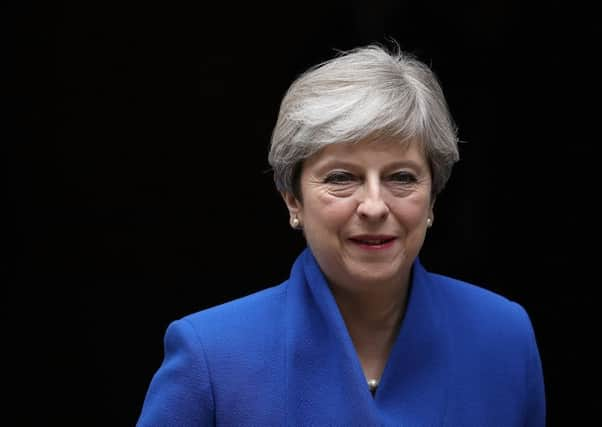General Election: What next for Theresa May's leadership?


The Prime Minister was denied an overall majority, and now looks set to rely on the support of Northern Ireland’s Democratic Unionist Party to continue to govern, a shaky arrangement that potentially has a limited shelf live.
Mrs May took a number of commentators by surprise by rather brazenly seeming that she would effectively try and style out the bad result and continue in Government almost as if she hadn’t been given a bloody nose.
Advertisement
Hide AdAdvertisement
Hide AdWe look at what is next for Theresa May and the Conservative party, even as they insist that they will be in Government for the next five years.
The DUP effect
The Tories and the DUP might seem like natural bedfellows, even before the 2015 election the Ulster Unionists were also talked of in potential coalition terms.
But the social conservatism of Arlene Foster’s party isn’t a smooth fit for the modern, more socially liberal Conservative Party.
Politicians who were brought into the fold by the detoxification undertaken by David Cameron and George Osborne will likely balk at sharing power with a party that remains opposed to same-sex marriage and abortion, and at an individual level has some shocking views on equality.
DUP politicians backed Brexit, some said counter-intuitively, though they vehemently oppose a hard Brexit.
Cabinet Power
Theresa May’s campaigning and Governing style put some in mind of the ‘sofa Government’ way that Tony Blair ran things when in power.
He was famous for not considering his Cabinet worthy of being collaborators in big political decisions.
Mrs May sidelined almost everyone in a campaign that was relentlessly Presidential.
Advertisement
Hide AdAdvertisement
Hide AdRumours were abound of Philip Hammond being sacked in a post-victory reshuffle, with other big cabinet changes mooted.
Now, Tory sources are briefing that no senior ministers are due to be moved, with the only likely changes being replacing the 10 junior ministers who lost their seats.
Ruth on manoeuvres?
Even in the immediate aftermath of the Exit Poll at 10pm, there was briefings that the Foreign Secretary Boris Johnson was ‘on manoeuvres’.
20 or so hours on, arguably the biggest putsch has come from the Scottish Conservative leader Ruth Davidson.
She has proven that it wasn’t impossible for Tories to win last night, adding an even dozen Scottish Tories to their tally of MPs.
It is clear that while Ruth Davidson is unlikely to feature as a leadership contender should a contest arise, she is keen to wield her considerable influence.
Ms Davidson has already u-turned on a u-turn and said that the Tories need to pursue a set of arrangements with the EU that looks very much like a ‘soft’ Brexit.
The Tory leader also tweeted a year-old speech about marriage equality she delivered in Belfast, seemingly a subtle repudiation of the social policies of her party’s new coalition partners.
Nuclear option
Advertisement
Hide AdAdvertisement
Hide AdSo what if the Prime Minister resigns? It might not seem that way, she is keen to continue, but the factors above might make it impossible for her to continue.
Firstly, it appears that the Prime Minister is going to get no leeway from Europe – the head of the European Commission wants Brexit talks to resume almost immediately.
That might be the EU trying to get a jaded May around the table to give them a better deal, or a sign that they need to negotiate with a leader who has the backing of their domestic parliament.
If Theresa May stumbles along until, say, the end of the year, a new Tory leader might get a boost, but will still face grim parliamentary arithmetic.
That could leave us staring down the barrel of another General Election in a matter of months.